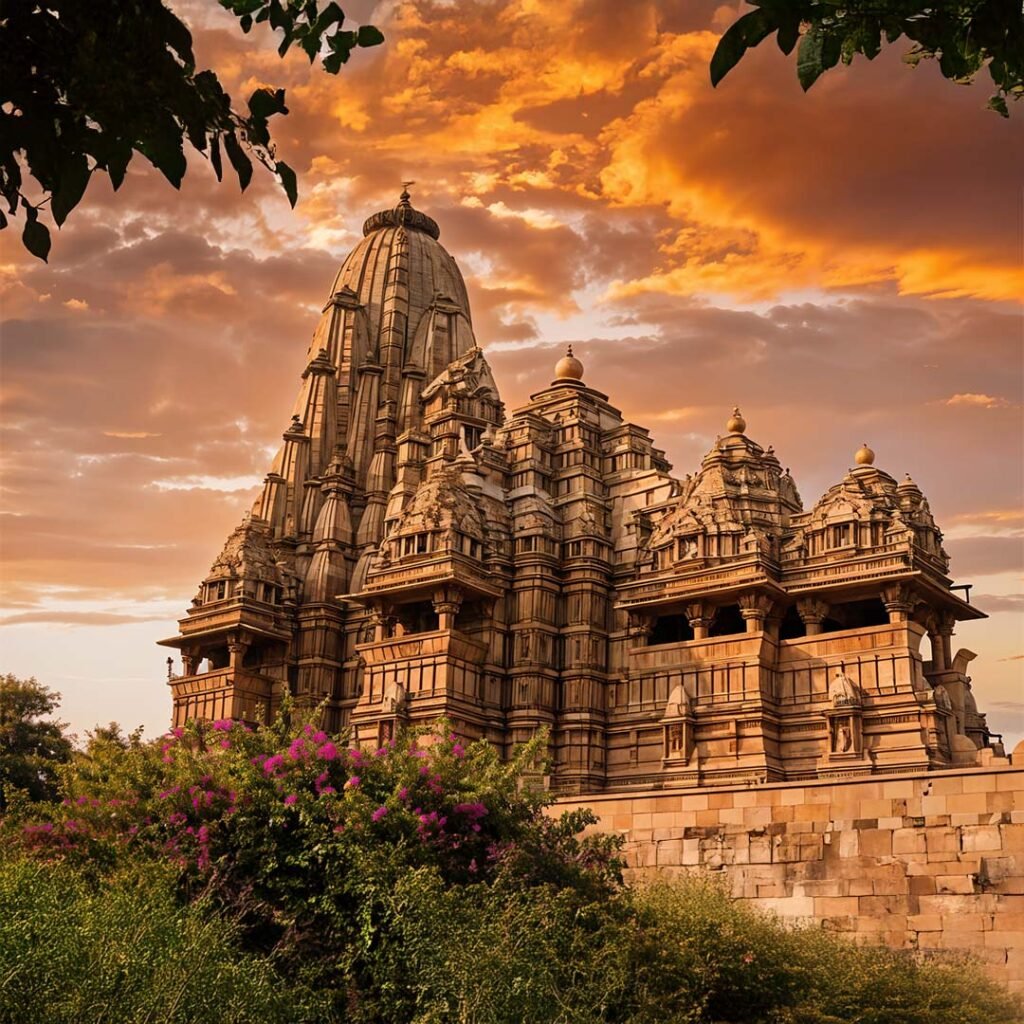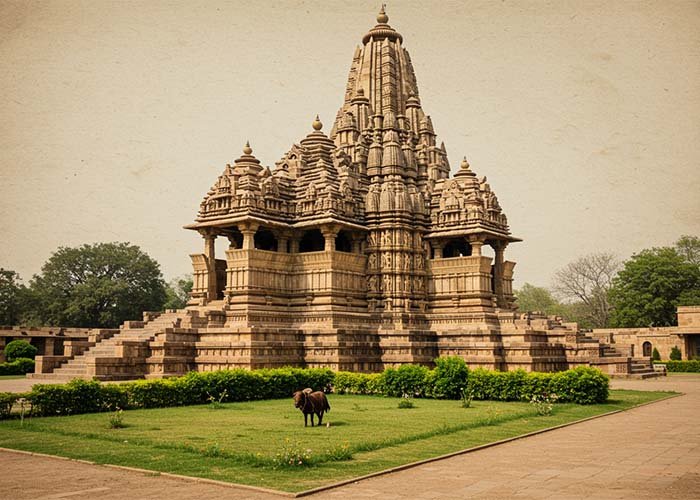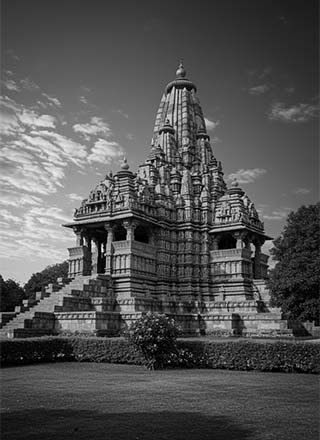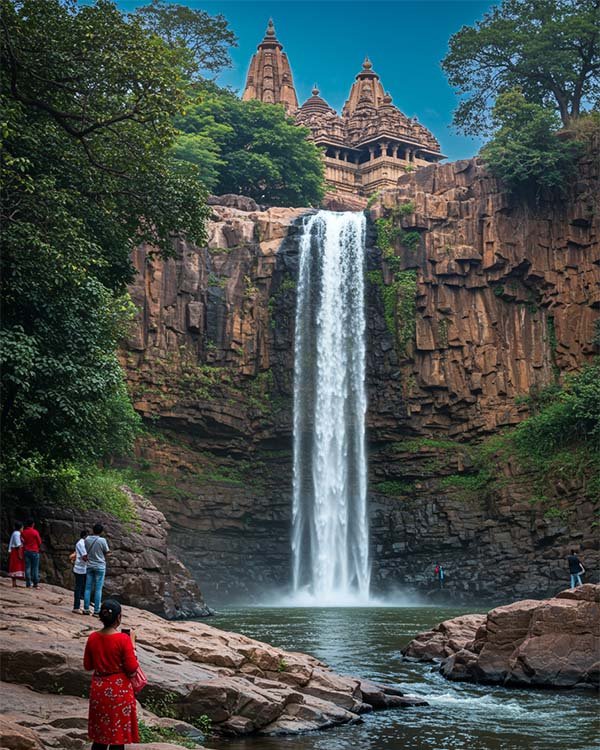

Khajuraho Mandir, Madhya Pradesh
The Khajuraho Mandir are one of India’s most renowned UNESCO World Heritage Sites, famous for their stunning Nagara-style architecture and intricate erotic sculptures. Built between 950 and 1050 AD by the Chandela dynasty, these temples symbolize love, spirituality, and artistic excellence. They showcase a blend of religious devotion and human expression, making them a masterpiece of medieval Indian architecture.

Khajuraho Mandir Features
- Nagara-style architecture: The temples have elevated platforms, intricately carved towers (Shikharas), and detailed sculptures.
- Erotic carvings: These temples are famous for sensual sculptures depicting human emotions, divine beauty, and daily life.
- Classification of Temples:
- Western Group: Most popular, includes Kandariya Mahadev Temple (largest and most ornate), Lakshmana Temple, and Vishwanath Temple.
- Eastern Group: Features Jain temples like Parshvanath and Adinath Temples.
- Southern Group: Includes Duladeo and Chaturbhuj Temples.
- Exquisite stone carvings: Every temple is adorned with gods, goddesses, celestial dancers, warriors, and mythical creatures.
Khajuraho Mandir Location
The Khajuraho Mandir are located in Khajuraho, Madhya Pradesh, approximately:
- Nearest Airport: Khajuraho Airport (5 km)
- Nearest Railway Station: Khajuraho Railway Station (6 km)
- Road Connectivity: Well-connected by buses and taxis from Jhansi (175 km), Satna (116 km), and Bhopal (375 km).

Khajuraho Mandir History
Built between the 10th and 12th centuries under the patronage of the Chandela kings, the Khajuraho Mandir were originally a complex of 85 temples, but only 22 have survived today. These temples were lost in history for centuries and rediscovered in the 19th century by British officer T.S. Burt. The sculptures, often misunderstood, actually depict the four major goals of Hindu life – Dharma (duty), Artha (prosperity), Kama (desire), and Moksha (liberation).
Khajuraho Mandir Nearby Attraction
- Raneh Falls (20 km): A stunning canyon waterfall on the Ken River.
- Panna National Park (30 km): Famous for tigers, leopards, and gharials.
- Dhubela Museum (57 km): Showcasing Chandela-era artifacts and sculptures.
- Kalinjar Fort (105 km): A historic fort with ancient temples and caves.
- Ajaygarh Fort (80 km): A remote yet scenic medieval fort.
